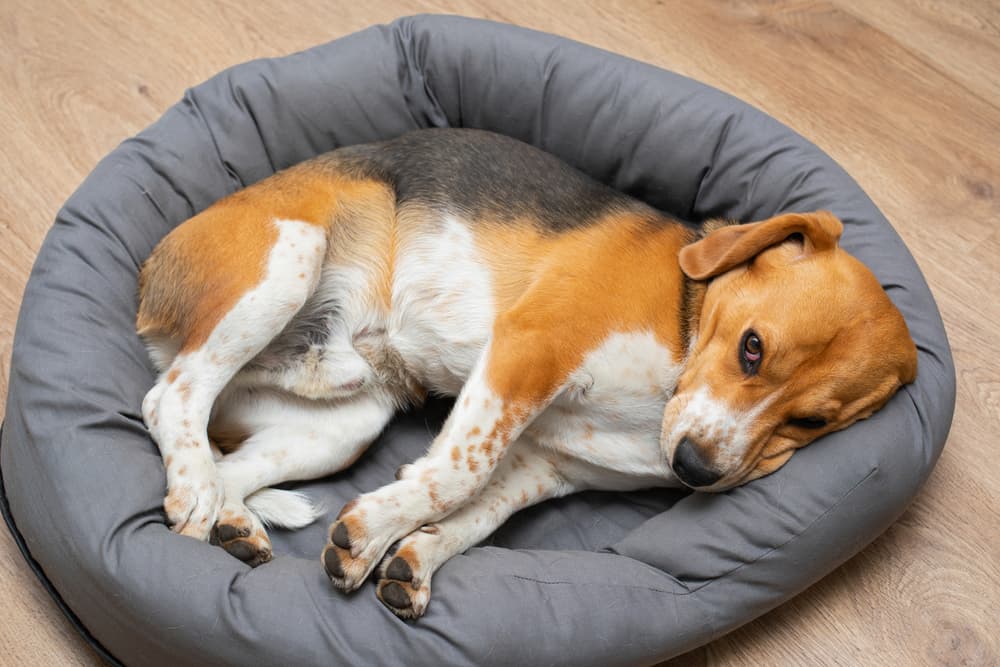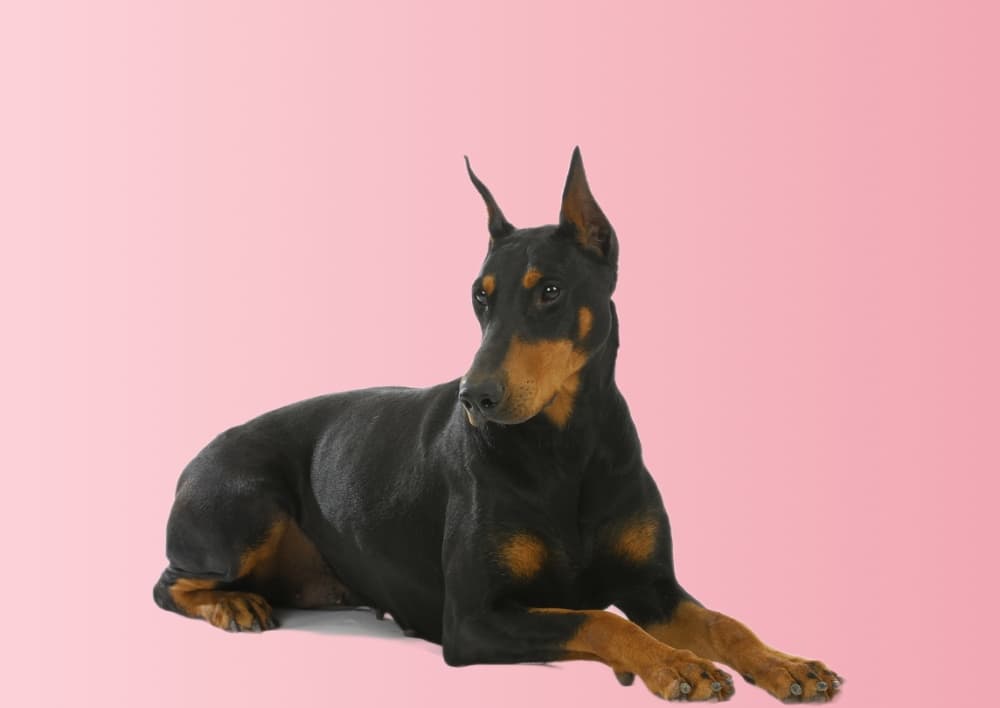
Parvo

Our guide has been authored by qualified veterinarians, but should not be taken as substitute for medical advice or professional veterinary consultation. If your pet displays any unusual symptoms, we strongly advise seeking guidance from a veterinarian
Understanding Parvo in dogs
Parvovirus disease is caused by a virus of the same name. It is a contagious disease that primarily affects the digestive and immune systems and can cause severe illness, especially in unvaccinated puppies and young dogs.
Parvo's Causes: Uncovering Triggers
- Direct contact with contaminated fecal matter: The primary route of infection of parvovirus in dogs is exposure to contaminated fecal matter, from a sick dog or a carrier of the disease. This contact can be direct, such as in the case of eating feces, exposure to fecal matter in garden grass, or as part of mutual sniffing among dogs.
- Exposure to a contaminated environment: The parvovirus can survive in the environment for extended periods, even up to several months. Therefore, any area where an infected dog has been in the past could pose a risk to young dogs.
- Transmission through placenta: Pregnant dogs infected with the virus may transmit it through the placenta to unborn puppies, causing severe infection or death.
 Recognizing Parvo: Signs and Symptoms
Recognizing Parvo: Signs and Symptoms
- Frequent bloody and foul-smelling diarrhea: The virus attacks the intestines severely, so the most characteristic sign of parvo infection is diarrhea, which can be watery, red, or black and have a foul odor. This diarrhea is often accompanied by vomiting, sometimes also bloody, abdominal pain, and intestinal contractions.
- Dehydration: The most common and rapid complication in this situation is dehydration accompanied by weakness, lethargy, and either high or low body temperature. Severe dehydration can deteriorate rapidly in young dogs and lead to death.
- Intestinal intussusception: Another complication is life-threatening in which the intestines fold in on themselves, causing blockage and strangulation, which without emergency treatment, can also lead to death.
- Immune system suppression: The virus causes severe damage to the immune system, and therefore, various systemic effects may occur, including a life-threatening condition called "sepsis."
 Parvo Diagnosis: How it's Identified
Parvo Diagnosis: How it's Identified
The diagnosis of the disease is generally simple. Suspicions of parvo arise immediately when the signs mentioned above appear in puppies or young dogs that are not fully vaccinated. However, there are several laboratory tests that can confirm the diagnosis and are essential for building a treatment protocol – fecal antigen test, characteristic changes in blood tests (for example, due to damage to the immune system, there will be a dramatic drop in white blood cell count, significant loss of protein in diarrhea often leads to low blood protein levels, and frequent vomiting can lead to low levels of potassium in the blood), and abdominal ultrasound to diagnose early bowel intussusception.
 Treating Parvo: Options and Approaches
Treating Parvo: Options and Approaches
Treatment focuses on supportive care to prevent associated complications and support the body while fighting the disease:
- Isolation – It is important to isolate sick dogs during treatment and maintain strict hygiene of the staff, as the virus can be highly contagious to other dogs.
- Hospitalization – Typically, this involves several days of intensive care, including fluid therapy to prevent dehydration and correction of electrolyte imbalances in the body.
- Medical treatment – Medications to prevent vomiting and protect the digestive system, antibiotics to treat/prevent secondary bacterial infections, and pain relief medications.
- Deworming treatment – Treatment against intestinal parasites that may also take advantage of the viral infection and complicate the condition.
- Probiotics and supplements against diarrhea
- Nutritional support – Dogs with parvo often have a reduced appetite or difficulty digesting food. Early feeding has been found to assist in intestinal recovery, so encourage the dog to eat small, frequent meals once vomiting stops.
- Plasma transfusion – In cases of low protein levels, plasma (the liquid part of blood without cells) containing important proteins is given.
- Surgical procedure – In the event of complications such as bowel intussusception, emergency surgery may be necessary to return the intestine to its normal position or to remove the affected part in the case of necrosis.
Parvo: Surprising Facts

While dogs are the primary hosts of the virus, it's essential to remember that other animals can also become infected, such as wolves, foxes, and coyotes.

Parvovirus in dogs is relatively new, with the first cases discovered in 1978. It is explained to have resulted from mutations of the feline parvovirus.

Today, thanks to vaccinations and advances in veterinary medicine, mortality rates from the disease are only 10-15% with intensive treatment.
 Vet's Tip: Dealing with Parvo
Vet's Tip: Dealing with Parvo
When young puppies are weaned, they receive maternal antibodies that help protect them during the first weeks of their lives. However, these antibodies can also “interfere” with vaccines, neutralizing them. The level of these antibodies decreases in puppies between the ages of 2-4 months. Therefore, it is crucial to adhere to a vaccination series in puppies, where the first component is given at weeks 6-8, and the last component is not given before week 16. It used to be common to perform an “accelerated” vaccination series in which puppies received the last component at week 12 of their lives. Studies have shown that in this way, the vaccine was effective only in about 60% of puppies, and therefore, many of them fell severely ill during their first year of life despite receiving the vaccine.
This doesn’t mean that until the completion of the vaccination series, the puppy should be kept “in a glass bubble.” On the contrary, it will only impair his ability to connect and adapt to the big world. However, it’s crucial not to let him roam freely in public parks or in areas with dog feces where the virus may be present or encounter unvaccinated dogs. It is advisable to acclimate him to exposure by walking him on a leash in clean areas and ensuring encounters only with vaccinated dogs.




Price Tag

Latest in Research and Treatments
The U.S. Department of Agriculture (USDA) recently granted temporary approval for a new and first-of-its
kind treatment for parvovirus in dogs. The treatment includes a single intravenous dose of antibodies that are supposed to eliminate it more quickly in puppies and young dogs infected with the disease.
dogs breeds Prone to Parvo
Did you know?
Enrolling in Animalia Pet Insurance
while your pet is healthy is a wise decision.
Waiting until a disease develops means it won't be covered.







